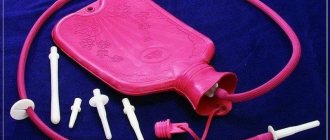Tuesday, November 26, 2019
Involuntary release of fluid from the bladder, which cannot be contained by force of will, is interpreted as urinary incontinence. This is not a disease, it is a symptom that indicates various disorders. It can be congenital due to abnormal development of the genitourinary system, or acquired due to any injuries or other disorders.
Urinary incontinence causes many inconveniences and reduces the quality of life. A person experiences a whole range of negative emotions, shame, apathy, depression. Asocial isolation appears, a reluctance to leave the house and communicate with other people. To solve the problem, Kegel exercises for urinary incontinence have been developed.
How exercises will help
The main purpose of Kegel exercises for urinary incontinence is to increase the tone of muscle tissue in the pelvis. Reasons for muscle weakness may include:
- pregnancy;
- genetic predisposition;
- age-related changes in the structure of muscle tissue;
- surgeries on the genitourinary system;
- chronic diseases;
- low physical activity;
- hormonal imbalance.
Control complex Kegels are recommended for women and men and have a beneficial effect not only on the genitourinary system. The table shows the problems that a set of exercises will help you cope with.
Symptoms | Women | Men |
| Prevention and treatment of urinary incontinence | + | + |
| Methods for preventing pelvic organ prolapse | + | |
| Preventive procedures for inflammatory processes in the pelvis | + | + |
| Restoring the elasticity of the birth canal | + | |
| Enhancing the quality of orgasm | + | + |
| Slowing down the aging process of organs and tissues | + | + |
| Prevention of hemorrhoids after prostate surgery | + |
Indications for wumbling classes
Do you know that:
- Dissatisfaction with sex life is one of the six main reasons for divorce
- Dissatisfaction in the intimate sphere is the main reason for cheating
- Weakening of the perineal muscles that occurs with age, during pregnancy and childbirth is the main cause of prolapse and prolapse of the walls of the vagina and uterus, and urinary incontinence.
- Every 11th woman is forced to undergo surgery for prolapse and prolapse of the vaginal walls
- More than 40% of women over 40 suffer from some form of urinary incontinence
Identify muscles for further training
Kegel gymnastics involves clearly identifying the muscles that need to be worked. To do this, you should squeeze the organs in the pelvic area, as if you really want to go to the toilet, but you have to restrain yourself. If it is not immediately possible to understand what exactly should be trained, then this can be done while urinating. To do this, while sitting on the toilet, use a sharp muscle contraction to interrupt the flow and then continue. Based on these sensations, you will understand which muscles should be trained.
Another way for women to determine the muscles they need is to use their fingers. It must be inserted into the vagina and the muscles squeezed. For men, you can find the pubococcygeus muscles by pressing on the area behind the testicles, without pressing on them.
How to use vaginal balls?
- STEP 1: Empty your bladder.
- STEP 2. Insert the ball into the vagina in the same way as a tampon, after lubricating it with a special lubricant. If it doesn’t work while standing, the ball can be inserted while lying down.
- STEP 3. Squeeze the ball with your vagina as if you want to stop urinating. You should feel the sensation of a foreign body in the vagina intensifying.
- STEP 4: Do Kegel exercises for 15 minutes. For greater effect, you can perform the exercises for an hour.
- STEP 5. Remove the ball from the vagina - pull the thread. If the ball is without thread, just push slightly.
After each use, the balls need to be cleaned to avoid infection. If the ball falls during an exercise, it must be washed.
Healthy lifestyle Urinary incontinence Kegel exercises
Preparation before charging
A Kegel exerciser is recommended for an empty bladder. Otherwise, pain and slight urination may occur during exercise.
You need to concentrate only on working the pelvic floor muscles. To increase concentration, pay attention to breathing. This helps you relax and get the best results. You need to do Kegel exercises in a comfortable position. This can be done standing, sitting, lying down. You can find a video on the Internet that demonstrates how to perform the exercises correctly.
What to do if you have pain or persistent incontinence
If you continue to have problems with pelvic pain or incontinence, contact your healthcare provider for a referral to one of MSK's physical therapists, a pelvic health specialist. This specialist will be able to understand the causes of pain or problems in the pelvic floor. You can also ask for a referral to a physical therapist if you have difficulty doing Kegel exercises.
MSK physical therapists provide services at the following locations:
Sillerman Center for Rehabilitation 515 Madison Avenue, 4th Floor (entrance on 53rd Street between Park Avenue and Madison Avenue) New York, NY 10022
The Sillerman Recovery Center can be reached at 646-888-1900.
to come back to the beginning
A set of workouts for men
Kegel exercises for men can be performed at any convenient time. No special conditions are needed. During training, you should try to squeeze your pelvic muscles as tightly as possible and hold them in this state for about five seconds. Then you need to relax. The set of exercises is repeated 10 to 20 times. To consolidate and enhance the effect, it is recommended to repeat two or three such approaches per day.
You can introduce elements of variety so that you don’t get tired of doing the same thing. Alternately squeeze and unclench the muscles of the anus. It is also possible to increase the rate of muscle contraction. Do compressions at the highest possible speed. After a short break, repeat again. Gymnastics for men prevents the occurrence of hemorrhoids and prevents blood stagnation in the pelvic organs.
Gymnastics for the pelvic floor muscles
Home – For patients – Useful articles – Urology and Andrology – Gymnastics for the pelvic floor muscles
At first, the exercises may be difficult, since in a significant proportion of men the perineal muscles are not developed at all, and with age they become even weaker. And perhaps, when you first perform this exercise, you will involuntarily tense your whole body just to tighten and tighten the muscles of the perineum even just a little. For beginners this is ok. Don't expect that you will learn to control the muscles of the perineum right away, in one day. As with any exercise, be consistent, be patient and keep going. And you will certainly achieve results!
Exercise 1. Sit in any position that is comfortable for you. Close your eyes, relax your whole body, breathe evenly and calmly. Slowly squeeze the anal sphincter, hold the tension for 2-3 seconds, then relax these muscles for a few seconds. Repeat the entire cycle again: compression - relaxation . Please note that the exercise must be performed slowly and smoothly. Perform compression and release 20-25 times. Then relax completely for 1 minute and proceed to the second exercise.
Exercise 2. Take a deep breath. As you inhale, gently contract your sphincter. Hold your breath for 10-15 seconds, and throughout this time keep tension in the muscles of the anus. Feel the tension in these muscles. Then exhale and at the same time relax the sphincter muscles. Perform the exercise 5-6 times. It is better to move on to the next exercise after mastering exercises 1 and 2.
Exercise 3. Sit in a position that is comfortable for you. Close your eyes and relax your whole body. Take a deep breath. At the same time as you inhale, squeeze the muscles of the perineum and pull them up as far as you can, but without excessive tension. While squeezing the muscles of the perineum, try to simultaneously pull in your stomach. In this position, hold your breath and maintain tension in the muscles of the perineum for as long as possible. As much as you can. Then exhale and at the same time as you exhale, relax the abdominal and perineal muscles. After breathing has been restored, repeat the exercise. Do the exercise 3-4 times.
Perform the exercises regularly, 2-3 times a day, especially after 2-2.5 hours of continuous sitting.
Exercises for men to train the pelvic floor muscles (Dorey, 2006)
(when dribbling urine)
1. Standing
Stand straight with your legs apart and tighten your pelvic floor muscles, as if you were trying to avoid losing your balance from a strong gust of wind (if you look in the mirror, you will see the root of the penis moving closer to the abdomen and the scrotum tightening/contracting). Hold the contraction as hard as you can without holding your breath or tensing your buttocks. Perform three maximal (as strong as possible) contractions in the morning, holding for 10 seconds, and three maximal contractions in the evening.
2. Sitting
Sit on a chair with your knees apart and tighten your pelvic floor muscles. Hold the contraction as hard as you can without holding your breath or tensing your buttocks. Perform three maximal (as strong as possible) contractions in the morning, holding for 10 seconds, and three maximal contractions in the evening.
3. Lying down
Lie on your back with your knees bent and knees apart. The technique is the same as in a sitting position.
4. While walking
Raise your pelvic floor muscles slightly upward as you walk.
5. After urination
After emptying your bladder, tighten your pelvic floor muscles upward as much as possible to avoid dripping urine.
Kegel exercises for men
Kegel exercises are designed specifically to train the pelvic floor muscles in men. The main secret of their implementation is systematicity and regularity, a smooth increase in the degree of load and duration.
The pelvic floor muscles support the internal organs of the abdominal cavity, while regulating physiological functions. Strengthening the muscles of the intimate sphere allows you to reduce or completely get rid of difficulties with urinary incontinence in men, frequent emission, incomplete emptying of the bladder, and “leakage” of urine. It has been noted that Kegel exercises have a positive effect on erectile dysfunction.
We determine the necessary muscle groups. To do this, you should tense the sphincter of the anus, as if you were trying to keep gases in the rectum. After which it is necessary to feel and tense the muscle groups involved in stopping the process of urine diversion in men. While performing the exercise, stand in front of a mirror and pay attention to the front wall of the abdomen and groin area: tensing the necessary muscles will slightly “tighten” the penis and scrotum. At the same time, the abdominal and thigh muscles should remain motionless. If your own sensations and the picture coincide with those noted, it means that the intimate muscles have been found correctly. You can start training them.
The main types of movements that make up the Kegel exercise system
Compression with varying degrees of acceleration . This type of physical activity involves cyclical tension of the muscles involved in stopping the process of urine diversion. Required effort: contracting the muscles, count to 3-5, then relax. During a period of relaxation, it is also possible to increase the count to 3-5 times and tense them again. Having gained a little experience, you can increase the duration of work of the contracted muscle from 5 to 25 seconds.
Various abbreviations . This type of impact involves alternating contractions followed by relaxation of the target muscles at an extremely fast pace.
Pushing movements
Kegel exercises are aimed at tensing those groups of male muscles that are used when straining to remove urine. To begin with, you need to try to do slow compressions of 10 repetitions, about 5 times a day. After a week, you should increase up to five repetitions. Carry out repetitions until their numerical indicator reaches 30 times. Having reached this limit, you need to do 150 movements every 24 hours to effectively maintain the tone of the pelvic muscles. As the number of repetitions increases, it makes sense to start doing push-ups and contractions. A slightly more complicated technical option for compression exercises is the so-called elevator travel exercise. When performing it, you should squeeze the muscles in the perineal area with a smooth forward movement.
First, with a little effort, the “1st floor” is reached. After which, without relaxing the muscles for a single second, they squeeze them even harder (2nd floor), then again and again. And so on until the maximum tension force. Moreover, at each “level” you should hold tension for 3-5 seconds. The completion of the previous floor marks a transition to a higher degree of compression (the floor located above) than the previous one.
And this continues several times until maximum effort is achieved. When you reach the limit (4th or 7th floor), you should begin a smooth “descent” in the opposite direction and direct the forward movement downward: after straining strongly, with a slight delay, move to a lower degree of tension. And so on until final relaxation.
Kegel exercise system (option)
Kegel exercises are fairly easy to do once you understand which muscles to use.
One of the easiest ways to find the right muscles (they are called the pubococcygeus muscle group after the name of the main muscle):
- Place one or two fingers behind the testicles without pressing on them.
- Imagine that you are urinating and trying to stop the stream by squeezing the internal muscle. This will be the pubococcygeus (PC) muscle. If you look in the mirror, you will see that when this muscle contracts, the penis and testicles move slightly.
An easy way to train the PC muscle is provided during urination. Here's how to do it:
- In the middle of urination, try to stop or slow the flow of urine. Use a pulling motion instead of a pushing motion. In this case, it seems as if the urethra is slightly “retracted”.
- Do not tense the muscles of your buttocks, legs or stomach, or hold your breath. If you can slow down or stop the flow of urine, then the training is successful.
- At first, you may not be able to stop the flow of urine. This means the PC muscle is not yet strong enough. Just keep practicing and everything will work out.
- Some men tense their PC muscle, imagining that they are trying to stop the passage of gas. This gives an unpleasant feeling.
How to perform Kegel exercises for men:
- Slowly tighten your PC muscle for a count of five.
- There is no need to hold your fingers on the muscle; it should be felt inside the body.
- Slowly relax the muscle while counting to five.
- Repeat 10 times.
- Perform the exercise daily, three times a day.
- When you start training, you may find it easier to do the exercise lying down, so that your muscles do not “fight” gravity. Some men also find it easier to tense their muscles for just two to three seconds.
- Gradually increase your practice time. After a few weeks, you should be able to tense a muscle for 10 seconds. And ideally – up to 30 seconds.
- Once your pelvic floor muscles are stronger, try doing Kegel exercises while sitting, standing, or walking.
- Contract your pelvic floor muscles immediately before and during any activity that puts pressure on your abdomen (sneezing, coughing, laughing, or weightlifting).
- During an erection, sharply tense the muscle so that the penis “jumps.”
- By contracting this muscle during sex, you not only maintain an erection, but can also prevent premature ejaculation.
- Remember: don't strain your legs, buttocks, or abdominal muscles while doing Kegel exercises.
It takes time to see results from any exercise, so be patient. A good regimen for Kegel training is three “sets” per day (morning, afternoon and evening). After a month, you will notice that you have better bladder control. These exercises will also be useful in the sexual sphere.
Exercises for difficulty urinating
To obtain better results, it is useful to combine the Kegel technique with other types of exercise therapy. Here are some options.
- Having straightened up in a vertical stance, place your legs at a width of 50 cm, hold your buttocks with your palms. Next, you should strain the muscles of the pelvic area with the angle of influence directed upward and inward.
- Stand up on your knees (“on all fours”). Next, they strain the muscles of the pelvic area, focusing upward and inward.
- Lie down on your stomach, bend one leg at the knee joint. Perform alternating compression and release of the target muscles of the pelvic area.
- Lying on your back, your legs are completely bent at the knees and slightly spread apart, your heels rest on the floor. The left hand holds the lower abdomen, the right hand is taken under the buttock. In this way, it is not difficult to determine whether the necessary muscles are involved. Squeeze the pelvic floor muscles, pulling them upward.
- Sit down with your legs crossed and your back straight. The muscles of the pelvic area are tensed similarly to the previous options.
- With your feet shoulder-width apart, your hands rest on your knees. The back is kept straight and the target muscles are tensed with the orientation upward and inward.
The positions described above are conditional. They can be used in the comfort of your own home, where no one will disturb you. Although this system was not initially regulated by strictly designated poses: they are selected based on individual preferences. You can train while lying down or sitting, or stand up: whichever you prefer.
It is required to concentrate and concentrate as much as possible on the therapeutic effects being undertaken.
Exercise therapy (optional)
- in a sitting position , “walking on the buttocks” is recommended, as well as bending forward with straightened legs.
- in a lying position , movements that are well known from kindergarten are performed: “Birch”, “Bicycle”, “Scissors”.
- standing - perform squats with the knees spread to the sides, bending the torso, swinging the leg.
Exercises for women
For women, charging the pelvic organs helps get rid of gynecological ailments. Physical education helps prevent age-related changes and helps to recover after childbirth.
The whole complex will take about ten minutes. It is recommended to do two or three approaches several times during the day. You can conduct classes at any time and anywhere. People around you won't even notice that you are doing special exercises. First, each should be done 5-7 times, periodically increasing the number to 30-35 times.
- The pelvic floor muscles are contracted and held for 5-10 seconds, then relaxed.
- Gradually strain the muscles of the genitourinary system from bottom to top, imagining the movement of an elevator. At the very peak, the tension is gradually relaxed, descending lower and lower.
- Add contraction of the anus muscles to the exercise, alternately contracting one or the other muscle.
After Kegel exercises, a positive effect is observed after two weeks. The muscles become more elastic and mobile, and urination control is observed.
Support and information regarding sexual health and intimacy
If you need more support or information about sexual health and intimacy, talk to your healthcare provider about the Female Sexual Medicine & Women's Health Program at Memorial Sloan Kettering (MSK). For more information or to make an appointment, call 646-888-5076.
Services through the Female Sexual Medicine & Women's Health Program are available at the following locations:
|
|
to come back to the beginning
Common mistakes
Exercising the muscles of the pelvic organs will not cause any harm if there are no health problems. If you experience pain during Kegel exercises, you should definitely consult your doctor. If there are no contraindications from doctors, then you can safely continue to do exercises. Otherwise, you can only make things worse for yourself.
Another mistake is holding your breath. In this case, the person pulls in the stomach and pushes the pelvic muscles down. Holding your breath increases the pressure of the pelvic organs, which leads to the development of muscle dysfunction. You should breathe evenly and freely.
A mistake is working the wrong muscle group. When the lower abdomen or buttocks become tense. There will be no benefit from such exercises.
Irregular exercises and long breaks between sets of exercises do not produce results. Only constant implementation of the necessary loads on the pelvic floor will allow you to forget about the problems of urinary incontinence.
Vaginal balls will significantly increase the effectiveness of Kegel exercises
Known by different names: Ben-Wa balls, pleasure balls, Kegel balls. Especially useful for women before childbirth and the postpartum period. Trained vaginal and pelvic floor muscles recover much faster.
Balls have different shapes, sizes, and materials of manufacture. If you are just starting out, you don’t need to take the smallest and heaviest ball. Weak muscles will not hold him. Take the largest latex or plastic ball. When you can hold a large light ball without effort, move on to a ball of smaller diameter and heavier weight.
Additional features
Physical activity has a positive effect on the entire body. Walking and physical exercise strengthen the entire body. It is recommended that you try to do squats that naturally tense and relax the target muscles. Squats will prepare a woman for childbirth, strengthen and enhance the elasticity of the birth canal. Stagnation of blood circulation in the small pelvis is prevented, which is especially dangerous and harmful when sitting for long periods of time.
Kegel exercises for urinary incontinence in older women help avoid uterine prolapse, which is a fairly common problem today. In addition, it will help restore the joy of communicating with people around you and going for long walks.
Why does pathology progress before menopause?
Women of predominantly perimenopausal age turn to doctors with similar problems. Why is this happening? We have already said that prolapse progresses slowly over 10-15 years. In the initial stages, its development is inhibited due to estrogenic effects on the muscles and mucous membranes of the pelvic floor. Women at a young age are sexually active, go in for sports, fitness, and this is, to a certain extent, a prevention of the progression of the disease.
In perimenopausal and postmenopausal age, the overall tone of all muscles, including the muscles of the perineum, decreases, the stimulating effect of estrogen ceases, and this quickly leads to the progression of the disease. It is at this time that many women notice leakage of urine when coughing, laughing, or physical activity. Bladder dysfunction often accompanies prolapse and prolapse of the genital organs. What to do in such a situation? How to protect yourself from this disease? Should I not give birth? Of course, it is possible and necessary to give birth, but you need to know about the possible consequences of vaginal birth, how to prevent ruptures during childbirth, how to strengthen and train the muscles of the perineum.










